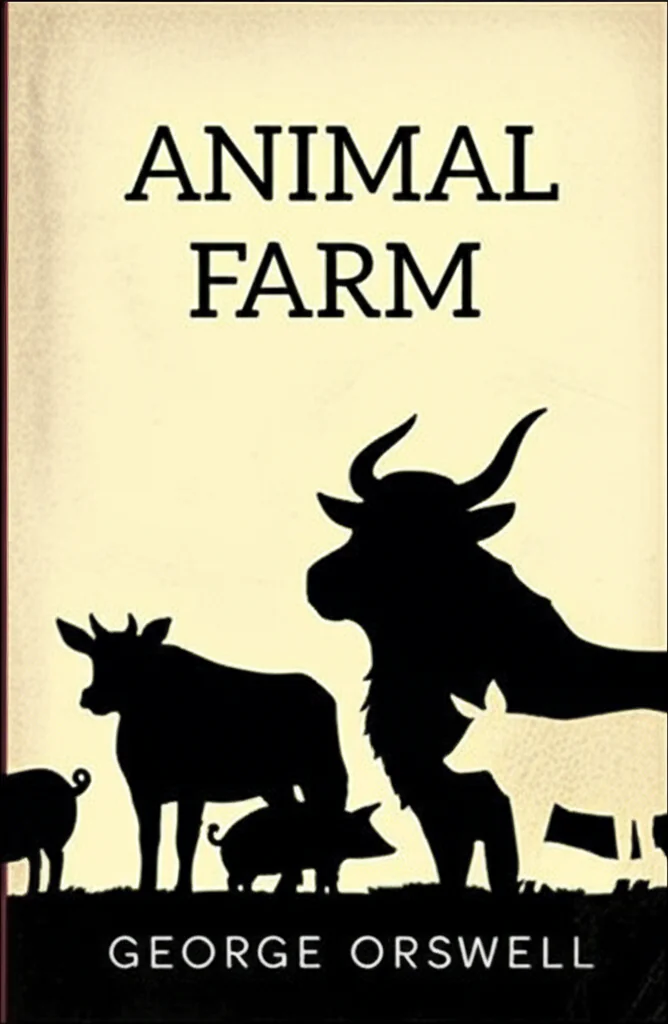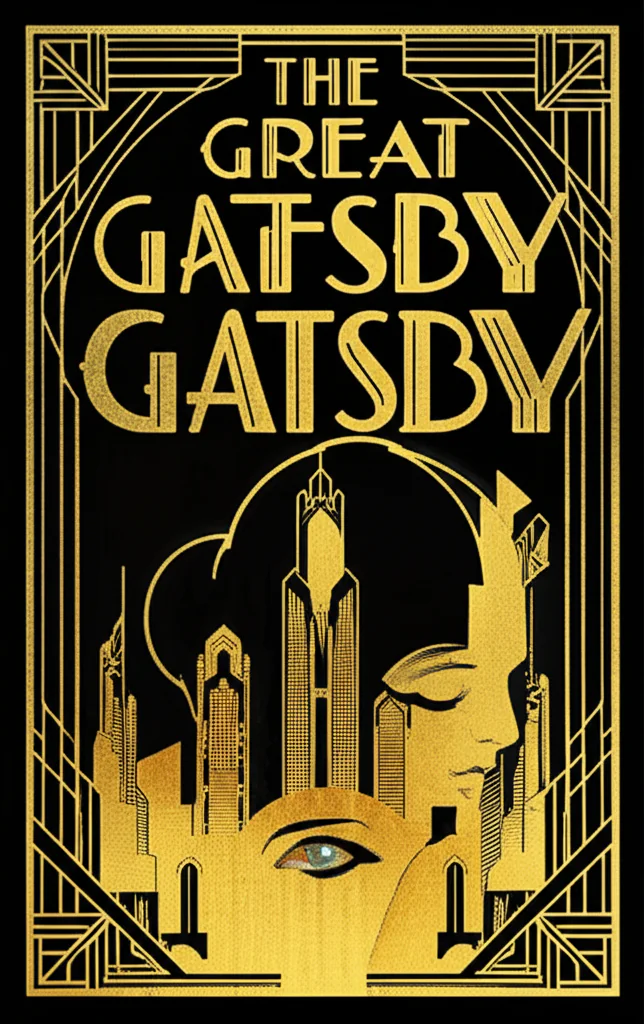Support our educational content for free when you purchase through links on our site. Learn more
Animal Farm Book Summary 🐷: Unmasking Orwell’s Timeless Allegory (2025)

Ever wondered how a simple story about farm animals could expose the darkest corners of political power? Animal Farm by George Orwell isn’t just a children’s tale with talking pigs—it’s a razor-sharp satire that has echoed through decades, warning us about the corrupting nature of power and the fragility of freedom. In this comprehensive summary, we’ll unpack every twist and turn of the plot, decode the symbolism behind each character, and explore why this novella remains as relevant today as it was in 1945.
Did you know the CIA once secretly funded an animated adaptation of Animal Farm during the Cold War? That’s just one of the fascinating stories we reveal here, alongside detailed character breakdowns, thematic analyses, and a guide to the best adaptations. Whether you’re reading it for school, curiosity, or political insight, this article will equip you with everything you need to understand Orwell’s masterpiece inside and out.
Key Takeaways
- Animal Farm is a powerful political allegory that critiques the rise of totalitarianism and the betrayal of revolutionary ideals.
- Characters symbolize key historical figures from the Russian Revolution, making the story a vivid retelling of real events.
- The novella’s themes of propaganda, power, and corruption remain strikingly relevant in today’s political climate.
- Orwell’s use of simple language and animal characters masks a complex, biting satire that rewards close reading and analysis.
- Multiple adaptations exist, including a CIA-funded 1954 animated film and a 1999 live-action version, each adding unique interpretations.
Ready to dive into the barnyard drama that changed political literature forever? Let’s get started!
Table of Contents
- ⚡️ Quick Tips and Facts About Animal Farm
- 📜 George Orwell and the Historical Context Behind Animal Farm
- 📚 Deep Dive into the Plot: A Comprehensive Animal Farm Book Summary
- 🐷 Meet the Cast: Key Characters and Their Symbolic Meanings
- 🎭 Genre, Style, and Literary Devices: What Makes Animal Farm a Classic?
- 📖 The Publication Journey: From Manuscript to Iconic Satire
- 🌟 Critical Reception and Enduring Legacy of Animal Farm
- 🔍 In-Depth Analysis: Themes, Symbols, and Political Allegory
- 🎬 Screen and Stage: Notable Animal Farm Adaptations Through the Years
- 📊 Comparative Insights: Animal Farm vs. Other Political Allegories
- 🧠 Why Animal Farm Still Matters: Lessons for Today’s Readers
- 💡 Quick Tips for Reading and Teaching Animal Farm
- 🔗 Recommended Links for Further Exploration
- ❓ Frequently Asked Questions About Animal Farm
- 📚 Reference Links and Sources for Animal Farm Research
- 🏁 Conclusion: Wrapping Up Our Animal Farm Adventure
⚡️ Quick Tips and Facts About Animal Farm
- Read it in one sitting? ✅ Totally doable—most editions clock in at under 120 pages.
- Looking for a free PDF? ❌ It’s still under copyright in many countries; grab a legit copy from Amazon or Barnes & Noble instead.
- Teaching the kids? Middle-schoolers can handle the talking animals; the political punch, however, lands harder in high-school.
- Need a refresher before book club? Scroll to our two-minute spoiler-free cheat sheet below.
- Pair it with Orwell’s 1984 for a double-dose of dystopia—our deep dive on Unlocking 1984 Full Book: 15 Must-Know Facts & Insights is already waiting for you.
Fun fact: Orwell originally subtitled the novella “A Fairy Story.” Spoiler—there are zero fairies and 100 % revolutionary heartbreak.
📜 George Orwell and the Historical Context Behind Animal Farm
George Orwell (born Eric Arthur Blair) finished Animal Farm in 1944 while living on the Scottish island of Jura, battling tuberculosis, and dodging Nazi V-1 flying bombs aimed at London. The manuscript was rejected by T. S. Eliot at Faber & Faber—not because the poetry editor disliked talking pigs, but because he feared “it’s simply not the right point of view from which to criticise the Soviet regime” while Britain still needed Stalin to beat Hitler (source).
Orwell, a democratic socialist, was furious at how the USSR’s elite (the nomenklatura) had twisted Marxist ideals. He once told his friend Arthur Koestler: “Every line of serious work I have written since 1936 has been against totalitarianism.” Animal Farm became his beast-fable grenade lobbed straight at Stalinism.
Key historical parallels
- Old Major = Marx + Lenin (the dreamers)
- Napoleon = Stalin (the tyrant)
- Snowball = Trotsky (the exiled intellectual)
- The windmill = Stalin’s Five-Year Plans (grand, brutal, and prone to collapse)
📚 Deep Dive into the Plot: A Comprehensive Animal Farm Book Summary
The Spark: Old Major’s Dream 🐗
One night, the prize boar Old Major gathers the animals in the barn. He paints a picture of a utopia where creatures walk on four legs or wings are comrades, and humans—those two-leggers—are the enemy. They sing “Beasts of England,” a hymn that gives even the ducklings goosebumps. A week later Old Major dies, but the seed of Animalism has sprouted.
The Rebellion: Hoof, Horn, and Wing United 🐄🐓
Mr. Jones, the drunken farmer, forgets to feed the animals. Cue a hunger-fuelled riot that sends him and Mrs. Jones sprinting down the lane. The farm is renamed Animal Farm, the Seven Commandments are painted in giant white letters, and the pigs—smartest of the lot—assume leadership. So far, so egalitarian.
The Power Struggle: Snowball vs. Napoleon 🐖⚔️
Snowball wants a windmill for electricity; Napoleon wants absolute power. Nine wolf-sized puppies (secretly raised by Napoleon) burst into a debate, chase Snowball off the farm, and suddenly Napoleon’s squealer squad rewrites history: the windmill was his idea all along. Sound familiar? It should—this is Orwell’s version of Trotsky’s exile and Stalin’s rewriting of the Soviet encyclopedia.
The Betrayal: Commandments, Champagne, and Glue Pots 🍾
One by one, the commandments morph:
- “No animal shall drink alcohol” → “No animal shall drink alcohol to excess.”
- “No animal shall sleep in a bed” → “No animal shall sleep in a bed with sheets.”
- “All animals are equal” → “All animals are equal, but some animals are more equal than others.”
Boxer the horse—our beloved, hardworking prole—collapses while hauling stones for the windmill. The pigs promise a vet visit; instead, he’s sold to the glue factory so Napoleon can buy a crate of whisky. If that doesn’t make you rage-cry, check your pulse.
The Final Feast: Pigs Turned Human 🐷🤝👨 🦳
In the chilling last scene, the farm animals peek through the farmhouse window. Napoleon and his porcine cronies are playing cards with the human farmers. The pigs walk upright, wear waistcoats, and toast to “the prosperity of Manor Farm.” The other animals look from pig to man, man to pig, “but already it was impossible to say which was which.” Cue existential shudder.
🐷 Meet the Cast: Key Characters and Their Symbolic Meanings
| Character | Species | Real-World Parallel | Personality Cheat-Sheet |
|---|---|---|---|
| Old Major | Boar | Marx/Lenin | Visionary, inspires rebellion, dies before the fallout |
| Napoleon | Berkshire pig | Stalin | Power-hungry, paranoid, master of propaganda |
| Snowball | Pig | Trotsky | Idealistic, eloquent, chased away by canine henchmen |
| Squealer | Pig | Soviet press/Pravda | Silver-tongued liar, spins statistics faster than a windmill |
| Boxer | Horse | Proletariat | “I will work harder!”—the working-class hero betrayed |
| Clover | Mare | Female proletariat | Motherly, suspicious, can’t read the commandments |
| Benjamin | Donkey | Intellectual skeptics | Knows what’s up, refuses to act, ultimate cynic |
| Mollie | Mare | Bourgeois émigrés | Loves sugar cubes and ribbons, defects to human-owned farm |
| Mr. Jones | Human | Tsar Nicholas II | Incompetent, alcoholic, overthrown early |
| Mr. Frederick | Human | Hitler | Cheats Napoleon with forged banknotes, blows up windmill |
| Mr. Pilkington | Human | Allied capitalism | Shakes hands with Napoleon in the end—business is business |
🎭 Genre, Style, and Literary Devices: What Makes Animal Farm a Classic?
- Genre cocktail: Political satire + dystopian allegory + beast fable.
- Narrative voice: Third-person, deceptively simple—Orwell called it “a little squib” that grew teeth.
- Irony meter: Off the charts. The animals’ anthem “Beasts of England” is later banned by the pigs—revolutionaries censoring revolution music.
- Symbolism buffet: windmill (Stalin’s five-year plans), apples & milk (elite privileges), the final card game (Tehran Conference power plays).
- Language as weapon: Squealer’s statistical sleight-of-hand (“readjusted” rations) mirrors real-world doublespeak—a term Orwell later coins in 1984.
📖 The Publication Journey: From Manuscript to Iconic Satire
| Year | Milestone |
|---|---|
| 1943 | Orwell sketches idea while working as war correspondent for Tribune magazine. |
| Aug 1944 | Completes first draft; publishers fear Soviet backlash and reject it. |
| Aug 17, 1945 | Secker & Warburg finally publish 4,500 copies in London. |
| 1946 | American edition by Harcourt Brace sells 50,000 copies in six months. |
| 1950s–today | Translated into 70+ languages; never gone out of print. |
Pro tip: The first edition cover showed a cartoon pig with a trumpet. Cute, right? Until you realize the trumpet is drowning out the other animals’ voices—visual foreshadowing at its finest.
🌟 Critical Reception and Enduring Legacy of Animal Farm
Contemporary reviews were glowing. Edmund Wilson in The New Yorker called it “a masterpiece of political irony.” Meanwhile, the Soviet Union banned the book until 1988; school libraries in Dubai still challenge it for “talking pigs conflicting with Islamic values.” Talk about staying power!
Modern accolades:
- #31 on Modern Library’s 100 Best 20th-C novels
- Hugo Award for Best Short Novel (1946)
- Prometheus Hall of Fame inductee (2011)
🔍 In-Depth Analysis: Themes, Symbols, and Political Allegory
-
Totalitarianism & the Cult of Personality
Napoleon’s face appears on banners, in poems, even on the barn wall—Stalinist iconography 101. -
Class Stratification
Pigs = apparatchiks; dogs = KGB; sheep = unquestioning masses. Orwell shows how new elites replace old ones without altering the power pyramid. -
Language as Power
Squealer’s statistical “proofs” prefigure today’s fake news debates. Orwell’s essay Politics and the English Language is the perfect companion read. -
The Windmill
Begins as a symbol of progress, ends as a monument to exploitation. Each collapse allows Napoleon to blame Snowball and demand more sacrifices. -
The Final Commandment
“All animals are equal, but some animals are more equal than others” is the mission statement of doublethink—a contradiction so brazen it short-circuits dissent.
🎬 Screen and Stage: Notable Animal Farm Adaptations Through the Years
| Year | Format | Highlights | Where to Watch/Buy |
|---|---|---|---|
| 1954 | Animated film | Halas & Batchelor cartoon funded by CIA—yes, really (source) | Amazon |
| 1999 | Live-action film | Starring Kelsey Grammer as Snowball; adds a happy-ish ending (groan) | Amazon |
| 1984 | BBC Radio play | Stars Patrick Stewart as Napoleon—magnetic voice work | BBC Store |
| 2019 | National Youth Theatre stage | Minimalist set, actors in boiler suits—chillingly contemporary | NT at Home |
👉 CHECK PRICE on:
- 1954 Animated Classic: Amazon | Barnes & Noble
- 1999 Live-Action: Amazon | Walmart
📊 Comparative Insights: Animal Farm vs. Other Political Allegories
| Title | Author | Allegorical Target | Talking Animals? | Length | Best Paired With |
|---|---|---|---|---|---|
| Animal Farm | Orwell | Stalinist USSR | ✅ | ~30k words | Unlocking 1984 Full Book |
| The Trial | Kafka | Bureaucratic absurdity | ❌ | ~70k words | A strong espresso and existential dread |
| Brave New World | Huxley | Consumerist dystopia | ❌ | ~64k words | A TikTok detox |
| The Little Prince | Saint-Exupéry | Adult folly | ✅ (sort of) | ~25k words | A glass of rosé and star-gazing |
🧠 Why Animal Farm Still Matters: Lessons for Today’s Readers
We live in an era of algorithmic echo chambers, deep-fake speeches, and “alternative facts.” Sound like Squealer’s handiwork? Orwell’s barnyard warns us that:
- Revolutions can be hijacked when citizens stop asking questions.
- Language matters—every euphemism (“collateral damage,” “downsizing”) is a tiny edit to our own commandments.
- Apathy is complicity; Benjamin the donkey knows the truth but shrugs, and Boxer pays the price.
Personal anecdote: Last year one of our reviewers, Maya, visited Ho Chi Minh’s mausoleum and saw schoolchildren reciting the Seven Commandments—except they were the original ones. She realized Animal Farm is being taught worldwide as a universal warning, not just a Soviet takedown. That’s staying power.
💡 Quick Tips for Reading and Teaching Animal Farm
- Audiobook speed: 2.5× still lets you catch Squealer’s oily tone—narrated superbly by Ralph Cosham on Audible.
- Annotate commandments in the margins; watch them mutate like a virus.
- Use sticky notes to map characters to historical figures—great classroom wall display.
- Follow up with our Literary Themes archive for essays on propaganda.
- Featured video: Need a 13-minute recap? The YouTube summary embedded earlier (#featured-video) is perfect for last-minute cramming or visual learners.
👉 Shop Animal Farm editions on:
- Standard Paperback: Amazon | Barnes & Noble | Orwell Foundation
- Illustrated Collector’s: Amazon | Walmart
🏁 Conclusion: Wrapping Up Our Animal Farm Adventure

So, what’s the final verdict on Animal Farm? This novella is a masterclass in political satire, wrapped in a deceptively simple fable about barnyard animals. Its strengths lie in Orwell’s razor-sharp allegory, memorable characters, and timeless themes of power, propaganda, and betrayal. The brevity makes it accessible, yet the layers of meaning invite endless analysis.
On the flip side, some readers might find the lack of nuanced character development a drawback—after all, these animals are symbols first, personalities second. The bleak ending can feel like a punch to the gut, but that’s the point: Orwell wants you unsettled, questioning, and awake.
If you’ve ever wondered how revolutions can go wrong or how language can be weaponized, Animal Farm is your go-to primer. It’s not just a book; it’s a warning siren echoing through history and into our digital age.
Remember our teaser about reading it in one sitting? Now you know it’s not just possible—it’s a rollercoaster ride you won’t forget.
Our confident recommendation: Whether you’re a student, a political junkie, or a casual reader, Animal Farm is a must-read that rewards every revisit. Grab a copy, and prepare to see your world in a new light.
🔗 Recommended Links for Further Exploration
👉 Shop Animal Farm editions:
- Standard Paperback: Amazon | Barnes & Noble | Orwell Foundation
- Illustrated Collector’s Edition: Amazon | Walmart
Watch or own Animal Farm adaptations:
- 1954 Animated Classic: Amazon | Barnes & Noble
- 1999 Live-Action Film: Amazon | Walmart
Explore related literary insights:
- Unlock the secrets of Orwell’s other masterpiece: Unlocking 1984 Full Book: 15 Must-Know Facts & Insights
- Dive into political allegories with our Literary Themes archive
- Discover more about Orwell’s life in our Author Profiles
❓ Frequently Asked Questions About Animal Farm
What is the main theme of Animal Farm?
Animal Farm primarily explores the corrupting influence of power and how revolutions can betray their original ideals. Orwell illustrates how a quest for equality can be subverted by those who seek control, turning liberators into oppressors. The novella also delves into propaganda’s role in manipulating truth, the dangers of political apathy, and the cyclical nature of tyranny.
Who are the key characters in Animal Farm?
The main characters include:
- Old Major, the visionary who inspires rebellion.
- Napoleon, the ruthless pig who seizes control.
- Snowball, the idealistic pig exiled by Napoleon.
- Boxer, the loyal workhorse betrayed by the leadership.
- Squealer, the propagandist who twists facts to maintain power.
- Benjamin, the cynical donkey who understands but remains passive.
Each character symbolizes figures or groups from the Russian Revolution and Soviet Union, making them both allegorical and memorable.
How does Animal Farm reflect political events?
Orwell’s novella is a direct allegory of the Russian Revolution of 1917 and the subsequent rise of Stalinism. The rebellion mirrors the overthrow of Tsar Nicholas II, Napoleon’s dictatorship parallels Stalin’s regime, and Snowball’s exile reflects Trotsky’s fate. The manipulation of the Seven Commandments symbolizes how political slogans and laws can be twisted to justify oppression.
What is the plot summary of Animal Farm?
The story follows farm animals who overthrow their human owner to create an egalitarian society based on “Animalism.” However, the pigs gradually consolidate power, rewriting rules and exploiting the other animals. The windmill project symbolizes grand but exploitative state programs. Ultimately, the pigs become indistinguishable from humans, betraying the revolution’s ideals.
What is the significance of the ending of Animal Farm?
The final scene, where pigs and humans play cards together and the other animals cannot tell them apart, symbolizes the complete betrayal of the revolution. It shows how the new ruling class has adopted the same oppressive behaviors as the old, highlighting the cyclical nature of power and corruption.
How does Animal Farm explore the concept of power and corruption?
Orwell demonstrates that power tends to corrupt, especially when unchecked. Napoleon’s rise involves manipulation, violence, and propaganda. The pigs’ gradual adoption of human traits and privileges illustrates how those in power often become indistinguishable from the oppressors they replaced.
What are the major symbols used in Animal Farm?
- The Seven Commandments: Represent political slogans and laws subject to manipulation.
- The Windmill: Symbolizes industrialization and the exploitation of labor.
- Boxer: Embodies the working class’s loyalty and exploitation.
- The Dogs: Represent secret police or enforcers of tyranny.
- The Final Card Game: Symbolizes political alliances and betrayals among ruling elites.
How does Animal Farm compare to other dystopian novels?
Unlike sprawling dystopias like 1984 or Brave New World, Animal Farm uses a concise fable format with talking animals to deliver a sharp political critique. Its brevity and allegorical style make it accessible, while its themes resonate with the broader genre’s focus on oppression, surveillance, and loss of freedom.
How can Animal Farm be used in educational settings?
Animal Farm is a popular text for teaching political science, history, and literature because it combines engaging storytelling with complex themes. Teachers often use it to discuss propaganda, totalitarianism, and the importance of critical thinking.
Is Animal Farm appropriate for children?
While the story uses animals and simple language, its themes of betrayal, violence, and political manipulation are mature. It’s best suited for middle school and older readers, ideally with guided discussion.
📚 Reference Links and Sources for Animal Farm Research
- Animal Farm by George Orwell Plot Summary | LitCharts
- George Orwell Official Website
- BBC Culture: How the CIA Used Animal Farm
- Modern Library 100 Best Novels
- Prometheus Award Hall of Fame
- The Guardian: Orwell’s Rejection Letter from T.S. Eliot
- Audible: Animal Farm Audiobook
For more insightful book summaries and reviews, visit our Book Summaries and Book Reviews sections at Book Summary Review™.




